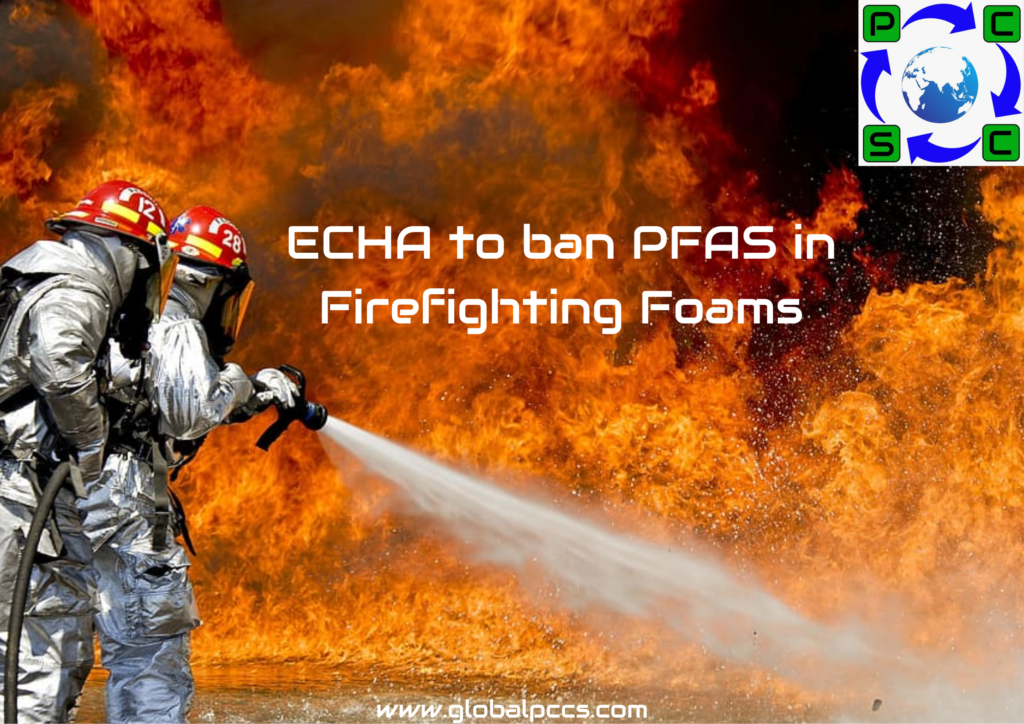
The proposed ban on per- and polyfluoroalkyl compounds (PFAS) in firefighting foams is supported by ECHA’s Committee for Risk Assessment (RAC). The draft opinion of the Committee for Socio-Economic Analysis (SEAC) is open for consultation until 15 May.
What are Firefighting Foams?
Firefighting foam is a material used for fire suppression. It both coats the fuel for the fire, suppressing combustion and cools the fire. These foams have been around since the beginning of the 20th century and contain surfactants (foaming agents), organic solvents, corrosion inhibitors, and stabilizers.
The two major classes of Firefighting Foam:
- Class A Foam: – Compressed air foam systems are frequently utilized by many fire departments to put out Class A materials like wood, paper, and brush (wildland) fires.
- Class B Foam (also called AFFF) : – Used to extinguish Class B materials, which include gasoline, oil, and jet fuel.
Aqueous film forming foam (AFFF, or alcohol resistant AR-AFFF) is a highly effective foam used for fighting high-hazard flammable liquid fires. AFFF is usually created by combining foaming agents with fluorinated surfactants. Per- and polyfluoroalkyl substances (PFAS) are the active ingredient in these fluorinated surfactants. When mixed with water and discharged, the foam forms an aqueous film that quickly cuts off the oxygen to the fire, cools it, extinguishes the fire, and prevents the fire from relighting. (Think fire triangle: oxygen, fuel, heat.)
Some fire stations may have only Class A foam, some fire stations may have both Class A and Class B foam.
How does PFAS containing firefighting foam impact people and the environment?
The term “forever chemicals” refers to the per- and polyfluoroalkyl compounds (PFAS) found in fluorinated firefighting foam. They persist in the environment, build up over time in human blood, and are poisonous to animals. They cause groundwater contamination, are carcinogenic, and are reproductively hazardous.
Conclusion: –
- Five distinct approaches to reducing the dangers posed by PFASs in firefighting foams have been evaluated by ECHA for their strengths and limitations.
- After use or sector-specific transition periods, the suggested approach would prohibit the marketing, use, and formulation of any PFASs in firefighting foams.
- The industry would have time during these transitional periods to replace foams that contain PFAS without compromising fire safety.
- Those who continue to use PFAS-based foams must make sure that releases to the environment are kept to a minimum during the transition periods. The proper disposal method would also need to be used for any waste foams and expired foams.
Source : – https://echa.europa.eu/-/echa-s-risk-assessment-committee-backs-pfas-ban-in-firefighting-foams
https://echa.europa.eu/-/proposal-to-ban-forever-chemicals-in-firefighting-foams-throughout-the-eu
https://www.michigan.gov/pfasresponse/investigations/firefighting-foam








 Authorised IMDS & CDX Training & Consulting partner for
Authorised IMDS & CDX Training & Consulting partner for






